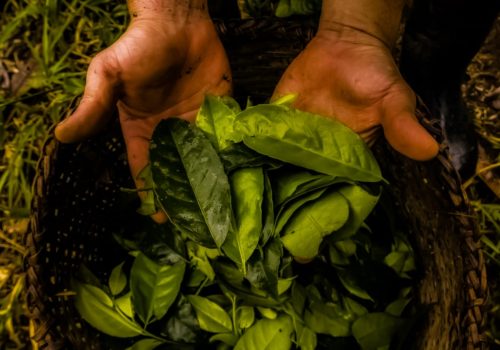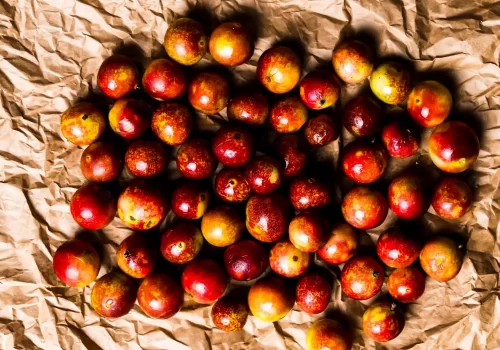I have always been fascinated by holistic health and the power of natural remedies. As a holistic health specialist, I have dedicated my life to exploring and understanding the various ways in which we can improve our health and well-being through natural means.
When I first learned about Maca root and its numerous health benefits, I knew I had to explore it more fully. I set off on a journey to Peru, the birthplace of Maca, to learn more about this incredible superfood.
Maca is known as “Peruvian Ginseng”. It is a versatile, highly valued root vegetable that has been used for thousands of years for its medicinal properties and as a staple food source in the Andean region of South America. This root vegetable has a rich history rooted in the indigenous cultures of the Andes Mountains and has gained widespread popularity in recent years due to its reputation as a superfood, with numerous health benefits attributed to its high concentration of vitamins, minerals, and antioxidants. The science behind Maca is equally fascinating, with numerous studies revealing its potential as a natural energy booster, mood enhancer, and even a fertility aid.
The use of maca dates back to the Inca Empire, where it was considered sacref food and used as a currency.
The Incas believed that Maca had the power to increase energy, stamina, and fertility, and they used it to enhance the performance of their warrior athletes. When the Spanish conquered the Inca Empire, they discovered the many benefits of Maca and began to cultivate it on a large scale.
ROOTED IN TRADITION
Maca root was also an important part of traditional medicine in South America. Herbalists and healers used Maca to treat a variety of ailments, from fatigue and stress to infertility and menstrual problems. Its reputation as a powerful and versatile remedy spread, and Maca became a staple in the diets of many communities in the Andes Mountains.
The impact of Maca on South American culture is far-reaching. It has played a role in the economic development of the region, as it is one of the main crops grown in the Andes. The sale of Maca provides a source of income for local farmers and supports the local economy. In addition, Maca is a part of the cultural identity of the people of South America, and its use and importance are celebrated in various festivals and ceremonies.
Despite its long history and cultural significance, Maca only recently gained popularity outside of South America. In recent years, there has been a growing interest in natural remedies and holistic health, and Maca root has become a popular ingredient in supplements, health food products, and even cosmetics. This increased interest has led to a surge in demand for Maca, and it is now grown and exported all over the world. The global market for Maca is now projected to exceed $1 Billion by 2026.
A JOURNEY WITHIN
As soon as I arrived in Peru, I was struck by the vibrant culture and the deep connection the Peruvian people had with nature. Everywhere I looked, I saw signs of the importance of natural remedies, from the markets selling all kinds of herbs and roots, to the people using traditional medicine to heal their ailments. I quickly realized that my journey to Peru was going to be much more than just a simple exploration of Maca root
I spent the next few weeks traveling through the Andes Mountains, visiting small villages and talking to local farmers and healers about Maca and its role in their culture. I learned that Maca has been used by the Peruvian people for thousands of years, not only for its health benefits but also as a source of energy and sustenance. The farmers shared with me the traditional methods they use to grow and harvest Maca, and I was struck by the care and respect they showed for the land and their crops. In Shapluy, in the shadows of Peru’s tallest mountain, I visited a local cooperative of farmers who were producing Maca root for export. I was impressed by their commitment to sustainable agriculture and their efforts to bring this amazing root to the world. I saw firsthand the positive impact that Maca root was having not only on the health of those who consumed it, but also on the local economy and the environment.
FROM THE SOIL TO THE SOUL
As soon as I arrived in Peru, I was struck by the vibrant culture and the deep connection the Peruvian people had with nature. Everywhere I looked, I saw signs of the importance of natural remedies, from the markets selling all kinds of herbs and roots, to the people using traditional medicine to heal their ailments. I quickly realized that my journey to Peru was going to be much more than just a simple exploration of Maca root
I spent the next few weeks traveling through the Andes Mountains, visiting small villages and talking to local farmers and healers about Maca and its role in their culture. I learned that Maca has been used by the Peruvian people for thousands of years, not only for its health benefits but also as a source of energy and sustenance. The farmers shared with me the traditional methods they use to grow and harvest Maca, and I was struck by the care and respect they showed for the land and their crops. In Shapluy, in the shadows of Peru’s tallest mountain, I visited a local cooperative of farmers who were producing Maca root for export. I was impressed by their commitment to sustainable agriculture and their efforts to bring this amazing root to the world. I saw firsthand the positive impact that Maca root was having not only on the health of those who consumed it, but also on the local economy and the environment.Maca is a member of the Brassicaceae family, which also includes other well-known plants such as broccoli, cauliflower, and cabbage. The root is typically yellow or cream in color and is roughly the size and shape of a radish. The plant has a distinctive, slightly bitter flavor and is high in nutrients, including vitamins B, C, and E, as well as minerals such as calcium, potassium, and iron.
Agricultural science plays a key role in the cultivation of Maca root. The root is typically grown at elevations of 3,000 to 4,000 meters above sea level, in soil that is rich in organic matter and minerals. The crop is usually planted in the spring and harvested in the fall, with each plant producing one to two roots per growing season.
The biology of Maca is well adapted to the harsh conditions of the Andes Mountains. The plant is able to withstand extreme temperatures, high altitudes, and limited water and soil resources. This is due, in part, to its deep root system, which allows it to absorb water and nutrients from deep within the soil. The plant also has a thick, protective outer layer that helps to insulate it from the cold and to protect it from environmental stressors.
The cultivation of Maca is a complex and demanding process that requires a deep understanding of both biology and agriculture. The root is typically grown at high altitudes, where temperatures can reach below freezing and growing conditions are harsh. This requires farmers to employ a range of techniques and strategies to ensure that the plants are healthy and productive, including the use of greenhouses, irrigation systems, and soil management practices.
One of the key challenges in growing Maca is managing the soil fertility. The soil in the Andes Mountains is often low in nutrients, which can limit the growth and productivity of the plants. To overcome this, farmers may use a variety of fertilizers and soil amendment techniques, such as composting and the addition of organic matter.
Another important aspect of Maca cultivation is pest and disease management. The harsh conditions of the Andes Mountains can make the plants susceptible to a range of pests and diseases, which can reduce crop yields and quality. To address this, farmers may use a combination of cultural practices, such as crop rotation and intercropping, as well as chemical controls, such as pesticides and fungicides.
Maca root is most potent when grown in Peru for several reasons:
Climate: The high Andes Mountains in Peru, where Maca root is grown, have a unique combination of high altitudes, extreme temperatures, and limited rainfall. These harsh conditions help to produce a root with a high concentration of vitamins, minerals, and biologically active compounds.
Soil: The soil in the Andes Mountains is rich in organic matter and minerals, which are essential for the growth and development of Maca. The soil in this region is also free from pollutants and other contaminants, which can negatively impact the quality and potency of the root.
Farming practices: The farmers who grow Maca in Peru have developed unique and effective farming practices over the centuries, including proper soil preparation, irrigation, and pest management techniques. These practices help to maximize yields and ensure the quality of the crop.
Tradition and culture: Maca has been used for its medicinal and nutritional properties for thousands of years in Peru, and the tradition and culture surrounding its use has been passed down from generation to generation. The knowledge and expertise that have been developed over the centuries help to ensure the quality and potency of the root.
These factors work together to produce a root that is rich in vitamins, minerals, and biologically active compounds and that is of the highest quality and potency.
SCIENCE HOLDS THE SECRET
I had the amazing opportunity to visit several scientific
research facilities in Lima, where I was able to learn about the numerous
health benefits of Maca root. I was amazed by the extensive research that has
been done on this root vegetable and the incredible findings that have been
uncovered. From its ability to increase energy and endurance, to its potential
to improve mood and support the immune system, Maca truly is a superfood.
The chemistry of Maca is complex and diverse. The root contains
a variety of compounds, including alkaloids, flavonoids, and polyphenols, which
are responsible for its many health benefits. In addition to its medicinal
properties, Maca is also a rich source of carbohydrates, including starch and
dietary fiber. The root is also a good source of protein, and contains a
variety of essential amino acids, including lysine and arginine.
One of the newest uses for Maca root in the nutritional
supplements industry is as a natural energy booster. Maca root has been shown
to increase energy and endurance, which makes it a popular ingredient in sports
nutrition supplements and energy drinks. The root is also rich in vitamins B
and C, which are essential for energy metabolism, and iron, which is important
for the production of red blood cells and the ability to increase oxygen uptake
and utilization.
The critical energizing compound in Maca is Macasine, believed
to be responsible for the root’s effects on energy and endurance. Macasine is
thought to work by increasing the availability of key vitamins and minerals,
such as vitamins B and C, which are essential for energy production, as well as
iron, which is important for the production of red blood cells. Macasine may
also work by improving oxygen uptake and utilization, which can help to reduce
fatigue and increase endurance. Macasine is also believed to have adaptogenic
properties- similar to ginseng and ashwaghanda- meaning that it can help the
body adapt to stress and improve overall physical and mental performance.
Another new use for Maca root in the nutritional supplements
industry is as a natural remedy for menopause. Maca root is rich in
phytoestrogens, which are plant compounds that mimic the effects of estrogen in
the body. This makes it a popular ingredient in supplements that are designed
to reduce symptoms of menopause, such as hot flashes and night sweats.
Maca root is also being used in new and innovative ways in
the beauty and skincare industry. The root is rich in antioxidants, which help
to protect the skin from damage from free radicals. Additionally, Maca root has
been shown to have anti-inflammatory properties, which may help to reduce the
appearance of fine lines and wrinkles. As a result, Maca root is becoming an
increasingly popular ingredient in skincare products and supplements that are
designed to promote healthy skin.
Beyond its energy, fertility and beauty
benefits, Maca has been shown to have a range of general health benefits. These
include reducing symptoms of depression and anxiety, improving cognitive
function and memory, and helping reduce the risk of chronic diseases such as
heart disease and diabetes.
NEW HORIZONS
As I returned home from my journey, I was filled with a deep appreciation for Maca and the culture that surrounds it. I was also inspired to share my findings with others and to continue my work as a holistic health specialist, helping people to discover the power of natural remedies. I will always treasure the memories of my time in Peru and the incredible insights I gained about Maca, a true gem of the natural world.



